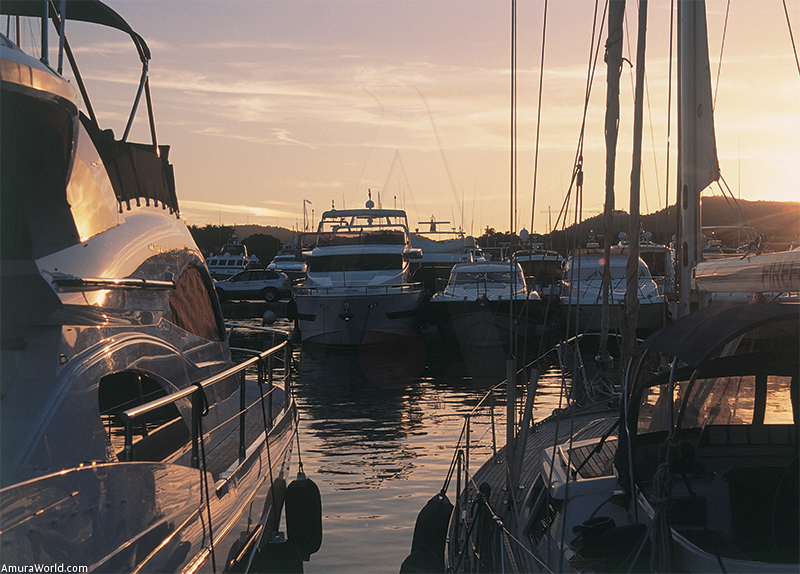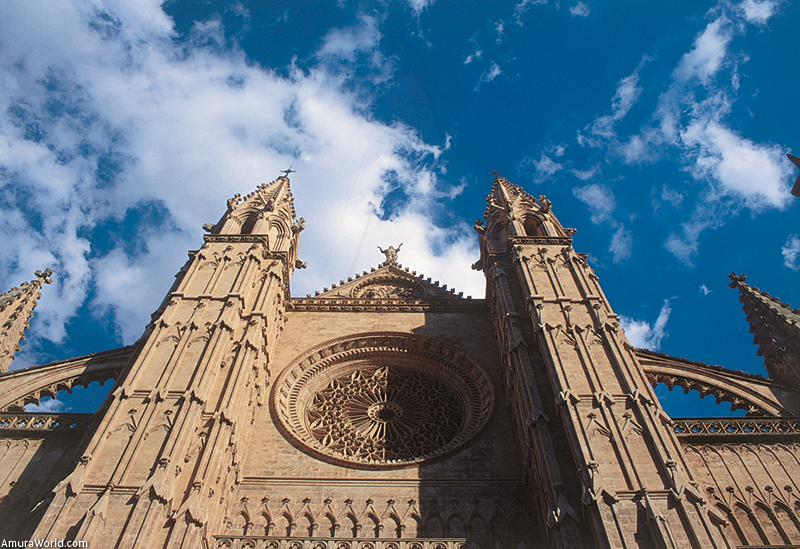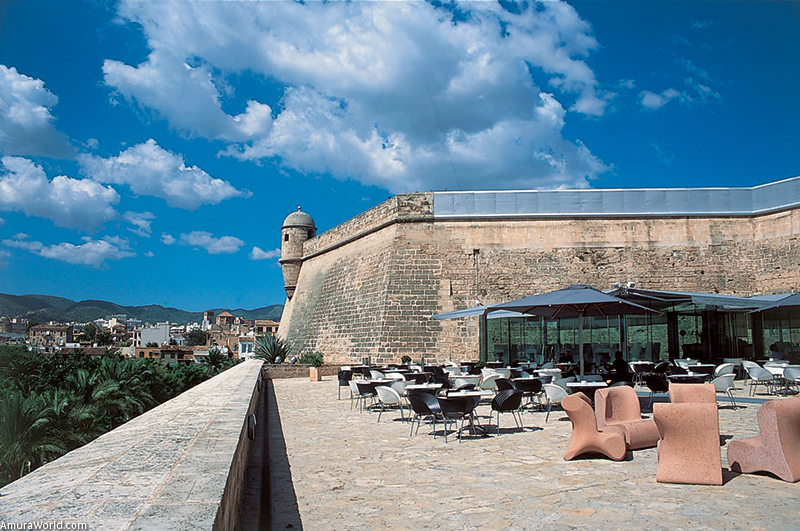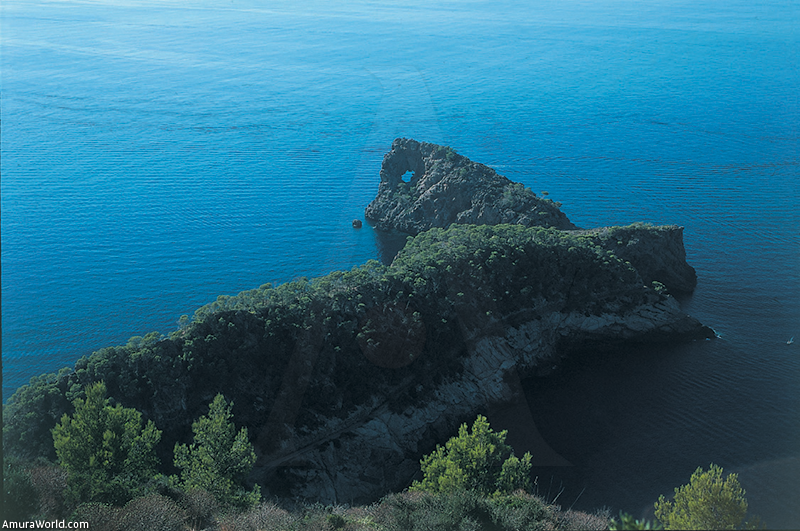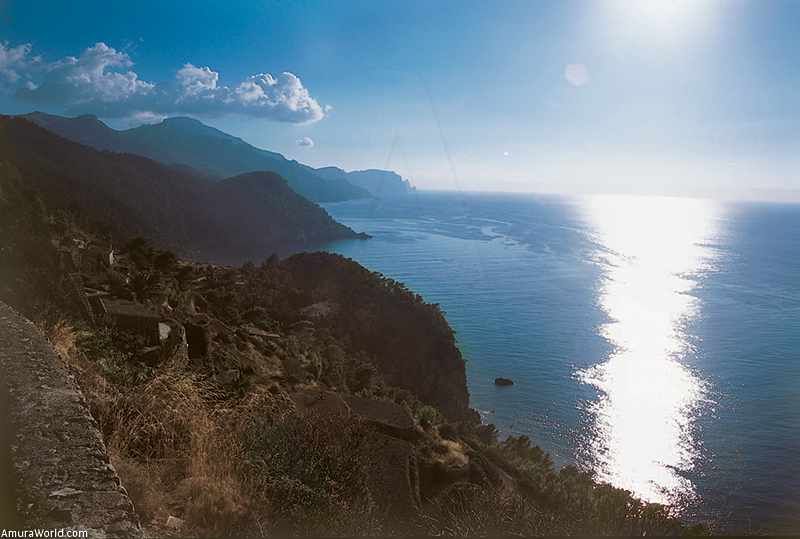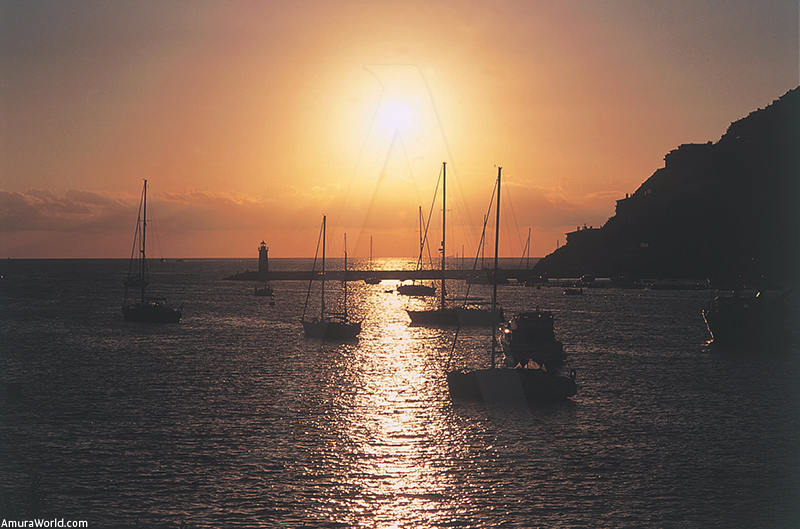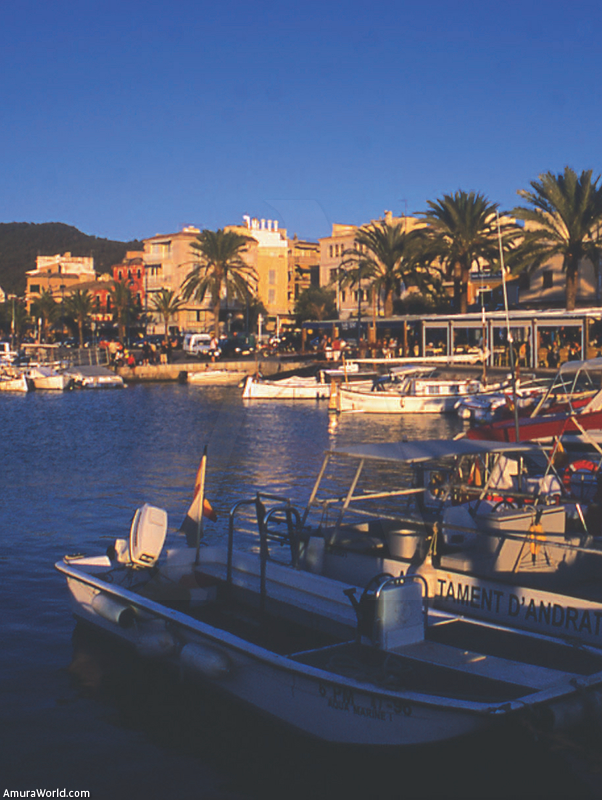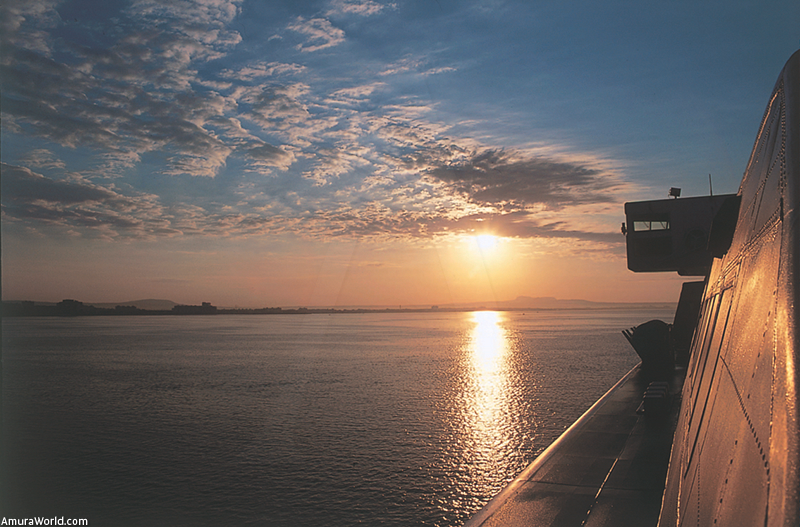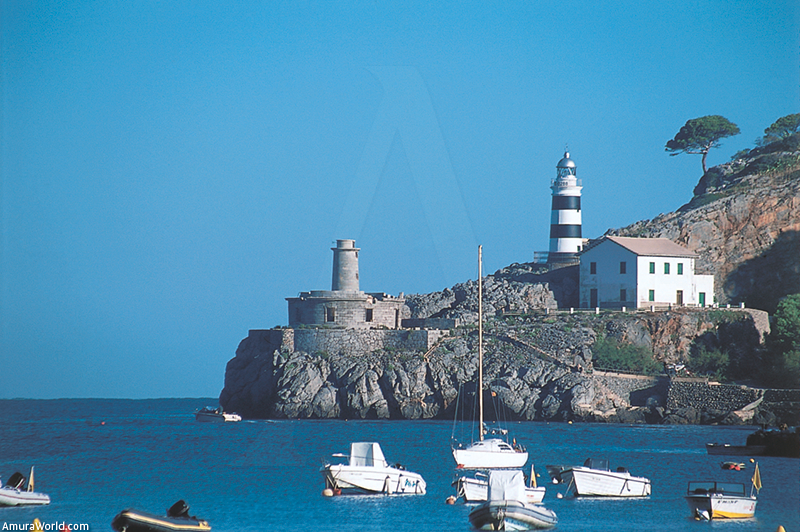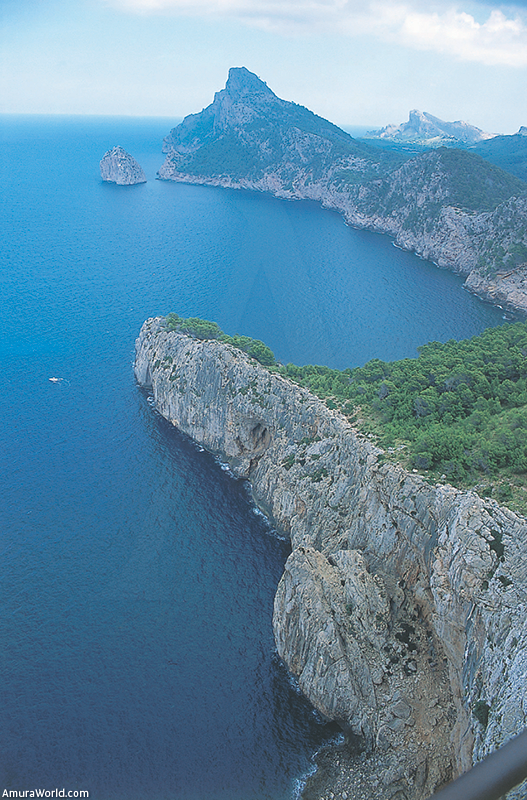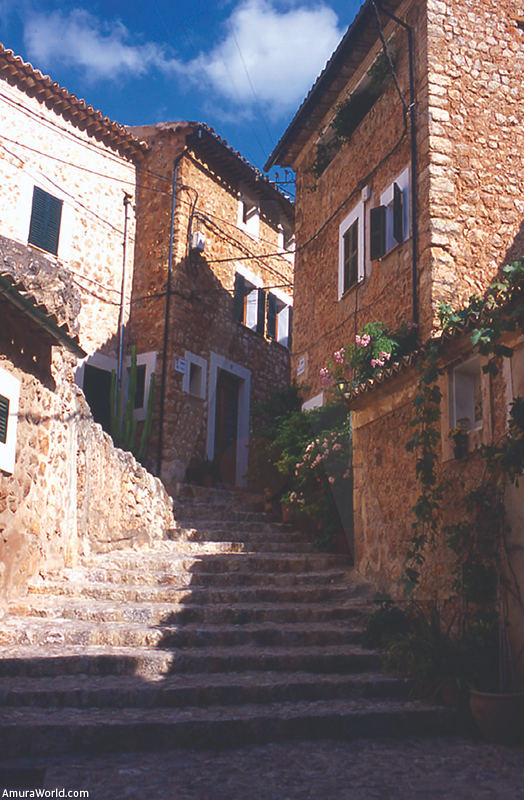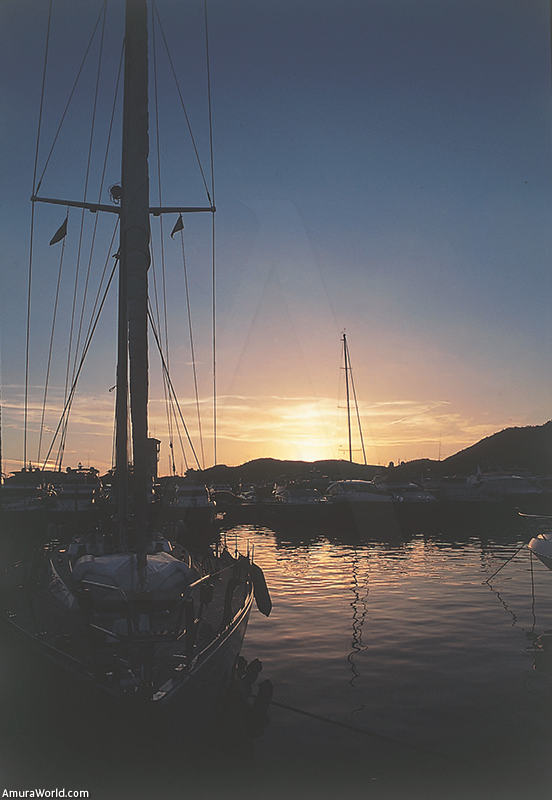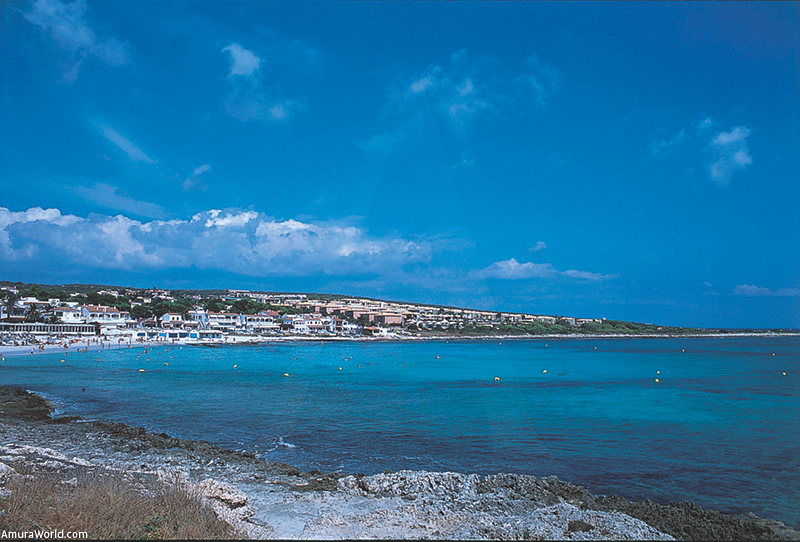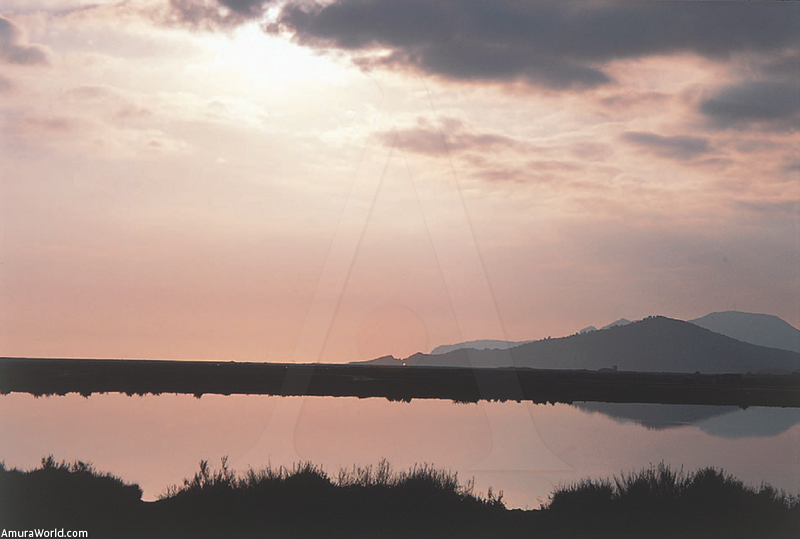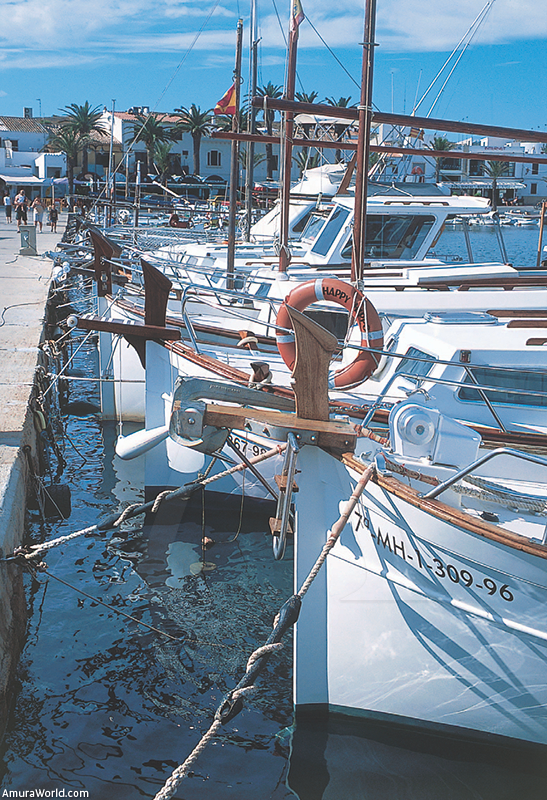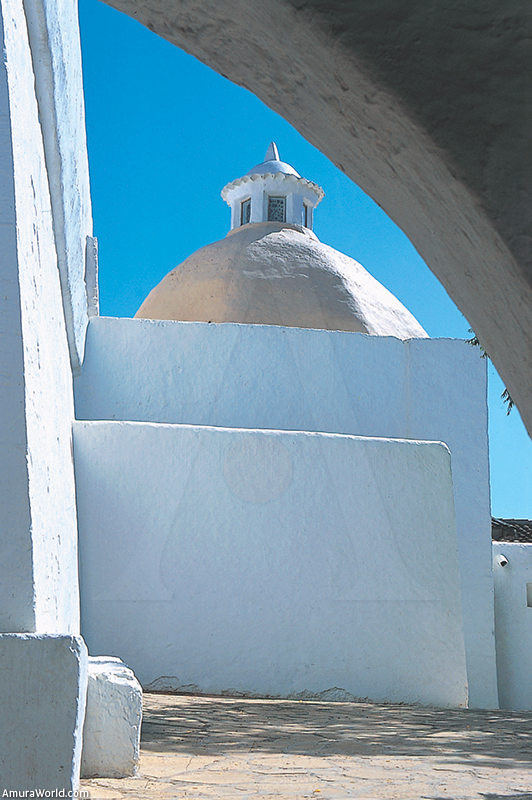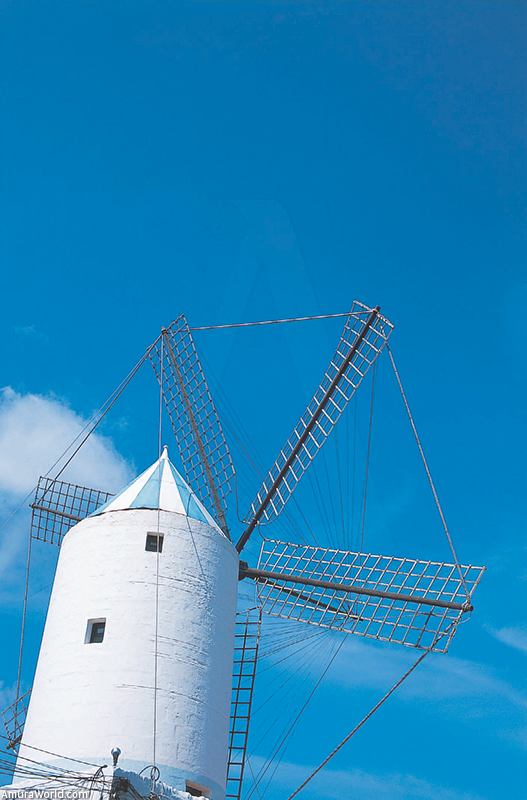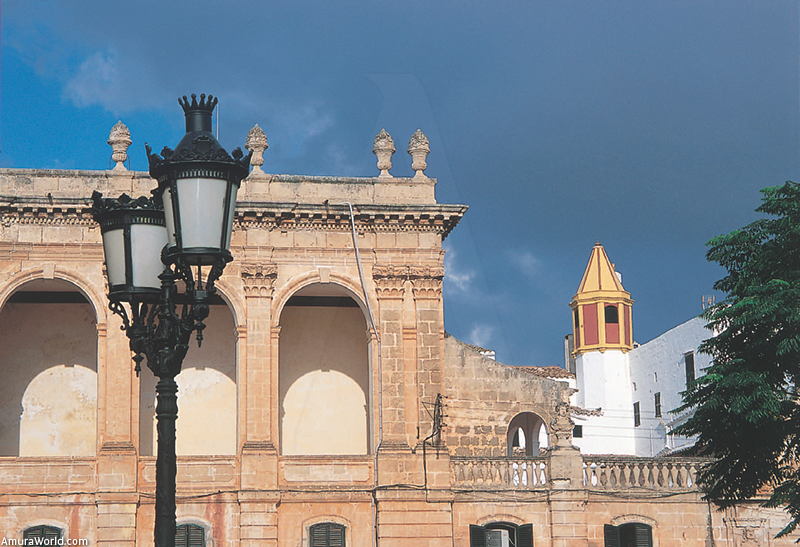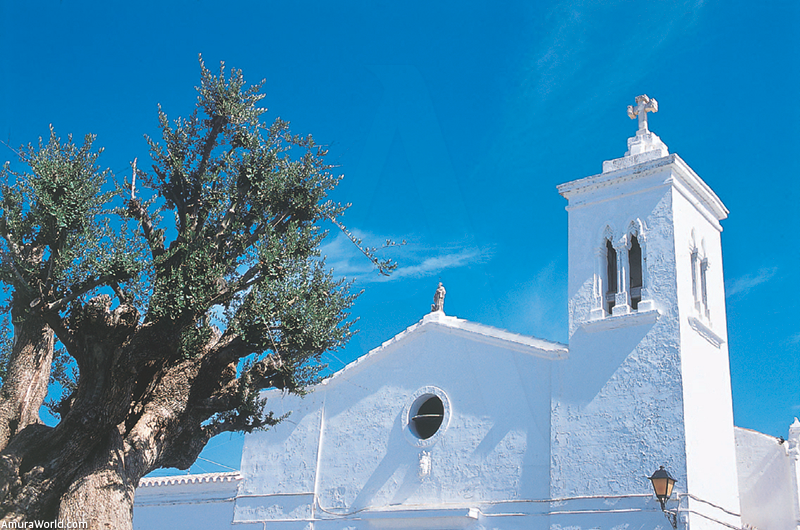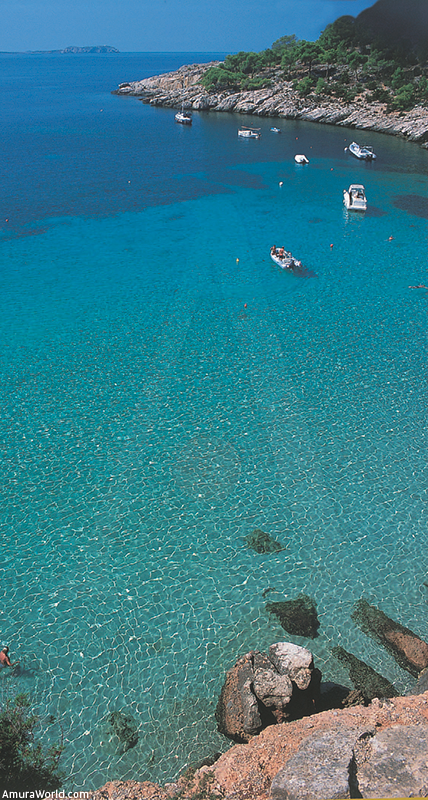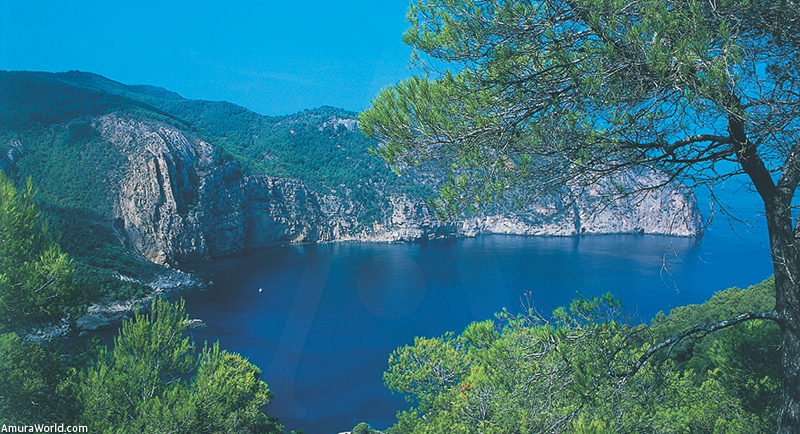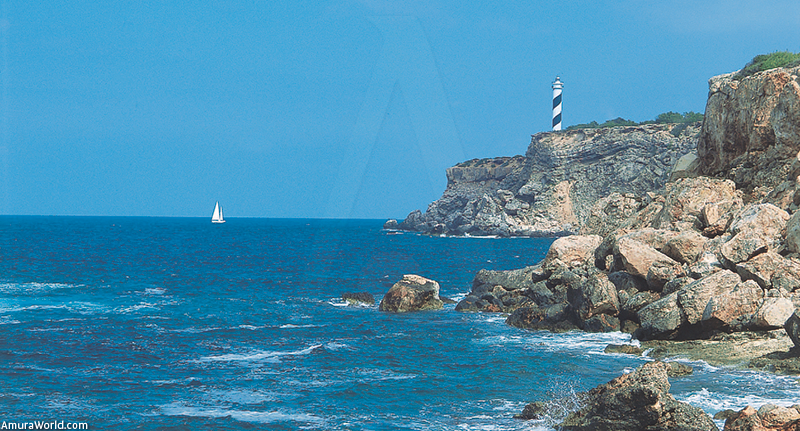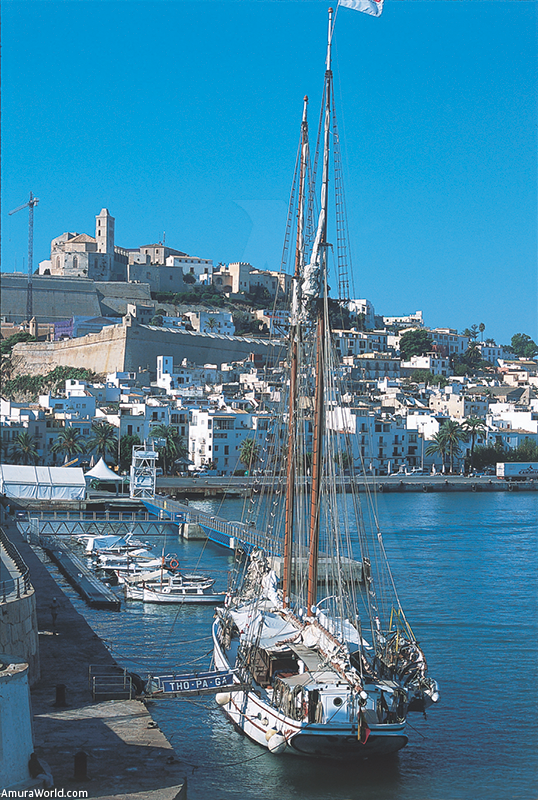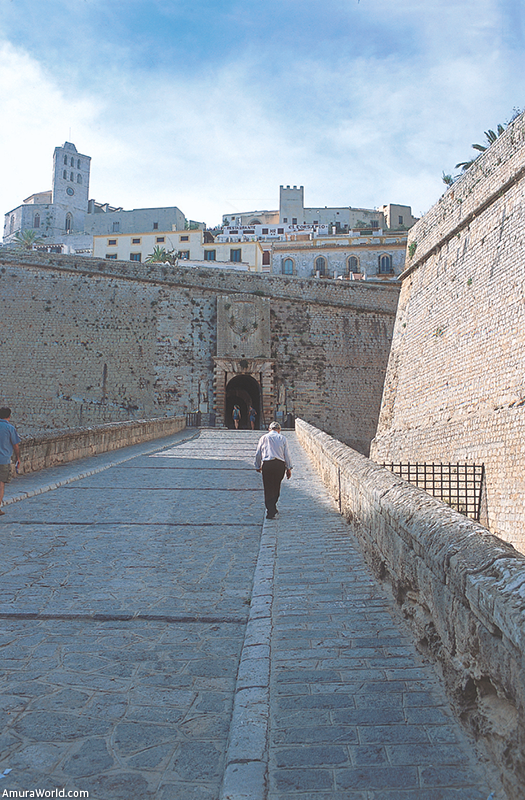Divine lace
In the middle of the western Mediterranean four islands arise with their rosary of islets spread along 1239 km of coast. When traveling along this littoral it feels as if one is in the middle of a beautiful piece of lace made by a divine hand. Its bays are hidden among mountains that drop into the sea to form coves the color of whose waters range from blue to turquoise to emerald.
Touring the Balearic Islands by sea is an amazing experience, a foray into a true natural paradise. And, even though it is a favorite summer vacation spot for many Europeans, on board a sailboat or yacht you will always find a hidden spot to anchor and enjoy this Eden.
Majorca, the Most Beautiful Of All
Majorca is the most beautiful of all, the largest and most diverse in its culture and scenery. On a sailboat and with a good breeze, you can leave Barcelona and, after 15 hours, reach Palma de Majorca, the elegant and sophisticated capital, whose cathedral rises from the sea like an aquatic goddess. It is an impressive sight: the cathedral’s buttresses are over 40 m high, creating a play of honey-colored lights and shadows that are reflected in the sea.
The Palacio de la Almudaina (Almudaina Palace), the ancient fortress of the Moorish rulers, elegantly accompanies it while, on the other side, it is adorned by the Palacio Episcopal (Episcopal Palace). The ruins of the imposing wall, with its bastions that seem to tell of ageless events, contribute to completing a scene that takes us back in time. In the background, like a natural backdrop, are the hills that enfold the city, protecting it from the northern winds, with the Castell de Bellver standing guard over all.
The city is a feast of beautiful buildings, mysterious, narrow streets, the exquisite facades of huge churches, its main plaza and the coolness of the ancient Arabian baths hidden within story-like gardens. All these are elements that invite visitors to experience the pleasure of wandering about and discovering its public secrets in places like a small, charming plaza with a fountain.
Palma, a real window to the past, is also a perfect place for installing oneself on the terraces of the bars and enjoying regional dishes like ensaimadas, the famed regional pastry made with a strip of puff pastry rolled into a spiral and sprinkled with sugar.
The port of Palma is immense and has several marinas lying at the foot of a coast that has been overrun with buildings.
Port Portals is the island’s best and most exclusive marina, where the jet sets’ most beautiful and stylish yachts are docked. It offers excellent services and, on the dock, you will find famous restaurants like Tristán, Palma’s most select. The charming town of Portals Nous is a delightful place on the western coast of Palma: this is where Mar i Vent, King Juan Carlos’ summer residence, is located.
From Port Portals, sailing to the west and passing Palma Nova and Magaluf, beaches that have been invaded by tourists from northern Europe, is the Portals Vells peninsula, with pine forests stretching to the coves. It is the Na Burguesa sierra, soft hills, charming towns, the cape of Figueroa cove and beautiful Santa Ponça bay, disfigured by all the buildings.
After passing Sa Mola cape, you enter a beautiful bay where the charming Port d’Andratx is located, protected by the surrounding hills and where the attractive restaurants and bars lie at the edge of the sea.
Sa Mola features the best sunsets in Majorca, with boats dancing among the reflections of the setting sun while visitors enjoy a caña and animated conversation.
The beautiful town of Andratx is seven kilometers away from the port, hidden among almond orchards. It is full of nooks and crannies, narrow streets and small steps and charming whitewashed houses surrounding the church and the Son Mas castle, headquarters of a classical music festival. This is where many famous people, like Michael Douglas and Claudia Schiffer, have homes.
Here Tramontana sierra begins, an impressive mountain range covered in pines whose dark green tone contrasts with the turquoise of the coves. Here, you have the sensation of being on one of the world’s most beautiful coasts.
The next safe port after Andratx is Puerto Sóller, one sailing day away, and where you can discover Sa Dragonera Island, a bird refuge. It is full of surprises, with striking coves that offer excellent anchoring options, and tiny Valldemossa port with its picturesque fishermen’s homes and an impressive view. The calm, blue and turquoise coves lie in the shade of pine-covered cliffs.
Puerto Sóller is a rustic town with a well-protected bay: it is the perfect place for setting out to enjoy beautiful panoramas of the sierra when you drive along the highway. The town of Sóller is inland, to protect it (and all the other towns) from pirates. Amid the natural setting, the residents maintain their traditions: they go to the market, the old people sit on benches and chat... it is a world of peace.
Going south, the highway links other charming towns nestled in the mountains: Lluc-Alcari among the olives, Deía, clinging to a rock and dominated by its church, with narrow, steep streets that witnessed the visit of Robert Graves, who settled here in 1929; the Son Marroig residence and the Miramar dominion, properties of the Archduke Luis Salvador de Austria who, in 1872, chose to live in this magnificent place; Valldemossa with its imposing Carthusian monastery, famous because, in 1883, Chopin and George Sand spent the winter there, giving it a romantic aura; and the strange, 18th century pharmacy with its antique ceramic demijohns.
To the east, the highway leads to the exquisite town of Fornalutx, considered one of the most beautiful on the island with its steep streets full of flowers, its mysterious doorways and a fountain that whispers a soft melody. The Ses Barques belvedere offers a sublime view over Sóller and the highway rises towards Puig Major (1443 m, the highest point), cutting through fields of olives and helm oaks to reach the Lluc monastery, where the Black Virgin, La Moreneta, is visited by pilgrims. After the Pollenca plain (cedilla), climb up to the d’Es Colomer belvedere, where visitors can admire the dramatic views of the stormy cliffs and the surprising, grand scenery of the Formentor peninsula. It is a magnificent setting.
Sailing from Puerto Sóller, the cliffs astound with dramatic views of rocks that are anchored in the sea: Sa Calobra, with its beach trapped between two cliffs, Sant Vicenç cove, Figuera cove and, finally, Formentor cape where you have access to Pollença bay to anchor in Port de Pollença or pass through d’Es Pinar bay to enter windy Alcudia bay, docking at Port d’Alcudia.
Alcudia, the oldest city on the island, was founded by the Phoenicians and occupied by the Romans and Arabs. It conserves its beautiful wall and Renaissance-style homes.
This is the ideal place to set out for the island of Menorca, about 40 km away, and from there, a one day’s sail away, navigators can reach the d’Artrutx cape and enter protected Port Ciudadela, a small natural estuary that is sunken in the heart of the city.
Menorca's Details
Menorca is a flat, limestone island, 50 km long and 17 wide, lashed by the Tramontana and Mistral winds. Navegation is chancy, subject to changes in the winds and dangerously low barometic pressures. Occupied for more than a century by the British, it is adorned with white towns, paths bordered by stone walls and its cities have preserved the peaceful charm of their English past.
Ciudadela, a city selected by the aristocracy, astounds visitors with its stunning, elegant palaces built along narrow streets that lead to the surprising Gothic church, built in the 18th century over a mosque. Part of the marvelous charm of this city, whose natural port is a kilometer long and one of the most frequented on the island, are its neoclassic palaces with their elegant facades, decorative doorways and high balconies and its richly adorned churches.
Sailing along the northern coast and passing through Bajoli bay, sailors discover a string of beautiful coves, with transparent waters, framed with pines and with beaches adorned with strange rocks.
The first safe harbor is Fornells that appears after Cape Cavalleria. Located near the entrance of the bay, which protects Fort Sant Antoni, Fornells, with its white houses, is a charming town that is renowned for its caldereta, its famed lobster soup. King Juan Carlos sails to this corner of the world to enjoy this beautiful setting to the fullest.
Sailing to the southeast is Port d’Addia, a three km long and 400 m wide natural port protected by two islets. Here, you will find Castell with its fine sand beach, Grau and its white houses that overlook the fishing boats and, finally, Punta de S’Esperó with the Fuerte de la Mola (Fort de la Mola), that protects the entrance of the surprisingly long ría de Maó, an estuary that is 6 km long and between 100 and 300 m wide.
At the end is the city of Maó, Menorca’s capital, founded in 205 B.C. by Magon, the Carthagian general who was Hannibal’s brother. It is a city for walking, for discovering its churches, the ancient Carmelite convent with its cloister transformed into a market, the Sant Francesc Monastery, the English-style town hall with its watch tower and the Xoriguer gin distillery, witness to the long British occupation.
From Maó you can explore the interior of the island, the charming town of Sant Lluis, Alaior, with its notable Santa Eulalia church, a fortified building dating from the 17th century where the famous Maó cheese is produced; its fields divided by stone fences and prehistoric ruins and caverns. Among the latter are those of Talayots (conical rock structures), Navetas (made from stones in the shape of a ship) and Taulas (stone, t-shaped monument).
When leaving the estuary, and after passing the white sand beach of Punta Prima, the southern coast appears with its beautiful, chrystalline-water coves where you can anchor and enjoy the beach. And, when you reach cape d’Artrutx, you can cross over to the east coast of Majorca, wild and adorned with beautiful virgin coves or invaded by buildings.
The first safe port is Porto Cristo, a small fishing port at the end of an estuary. Then, there is Porto Colom, a peaceful port in a bay with a narrow mouth.
Further along, sailors discover d’Or cove, with its elegant marinas and marvelous diving spots; Porto Petro, Mondrago cove and the natural beauty of its transparent waters surrounded by pine trees, Figuera cove and its small houses with blue and green windows.
Ses Salinas cape is the southern point of the island, a different setting of salt flats set among pines. It is the closest place for setting out to explore the charming Cabrera Archipelago, a unique place with a Mediterranean bird refuge and magnificent surroundings.
The southern coast of Majorca is home to superb Es Trenc beach and, when nearing Palma, there are a number of marinas offering fine services, like the Portixol, and large tourism developments.
Cosmopolitan Ibiza
From Palma to Ibiza, about 50 nautical miles and 20 hours away, depending on the winds that can be variable, sailors will reach the northeastern tip of the island and find amazing, beautiful Tagomago island.
The best way to discover Ibiza is by sailing around it counterclockwise to take advantage of the winds. This white island, invaded by hippies in the 60s, disfigured by horrendous buildings for lowincome tourism but beautified by the homes of jetsetters and flooded by their parties, is visited by the whole world.
Ibiza is still a charming island, with coves hidden at the bottom of dizzying, pine-covered cliffs. The north and northeast coast are made up of a series of marvelous coves and bays, most of them wild, hidden and beautiful (Portinatx, Xucla, Es portixol). They offer excellent anchoring points in natural ports such as Sant Miquel.
After a full day’s travel discovering the natural beauty of the coves the first marina we encounter after Portinatx is Sant Antoni, a world of yachts and large tourism developments.
The east coast features a chain of coves, islets, impressive beaches of limpid waters, some tourism developments and almost virgin bays.
The unique setting of Es Vedra and Es Vedranell, two enormous rocks, is one of the best dive spots. Ses Portes point, further south of Ibiza, is protected on both sides by a flat coast with beautiful salt flats that reflect the windmills, shining in the afternoon sun, as well as long beaches, popular among nudists (Platja Es Cavallet). It is also the closest point of departure for Formentera Island, the most meridian of the Balearic Islands, separated from Ibiza by a canal that measures spans over four km and is sprinkled with a chain of islets.
Formentera is 23 km long and 17 wide and is formed by two limestone plateaus whose highest point is less than 192 m. It has superb cliffs, united by a sandy isthmus, and has dreamy beaches that edge a unique semiarid setting. There are no natural ports and the only safe anchoring spot is the port of La Savina, with a marina that shelters boats when the northern winds blow. Eleven nautical miles separate it from La Savina de Eivissa, crossing that varies depending on the north-south winds.
Eivissa is the pearl of Ibiza, its mysterious capital, a white town reclining on a rock crowned by the Dalt Vila wall and the tower of the cathedral. The huge marina starts in the modern part of the city and stretches all the way to Passeig de Vara de Rey, which closes the entrance to the bay and offers a safe port for exploring the island on foot.
The old city is a mysterious place of narrow streets and small plazas invaded by shops, restaurants and crowds saturated by the sun. Even so, it has known how to retain a certain charm. When entering the walled part of the high city through the monumental Ses Taules door, one can feel the history that dwells in these enormous walls flanked by bulwarks. From the Baluard Santa Llucia there is a beautiful view of the city and the bay. The narrow streets lead visitors to discover stately homes, the ancient Convento de Santo Domingo with its beautiful 16th century patio, finally taking them to the cathedral and the castle with its medieval ambiance.
Ibiza is also fields of olivestrees, helm oaks, pines and fig trees, its white towns dominated by austere churches, the art of living and the beauty of its people. Santa Gertrudis, Sant Carles de Peralta and Sant Joan de Labritja are some of the pretty towns where visitors can escape from the crowded beaches and discover this attractive island.
Navigating northward along the coast, against the wind, there are gorgeous beaches, some invaded by modern buildings that disfigure the scenery. Here is where you can start the long voyage back to Palma de Majorca.
The Balearic Islands are a different Spain. Its coasts are immensely rich in beauty, coves and surprises. They emerge like a sailor’s paradise, a pearl in the Mediterranean.
It is impossible to fully describe its charms but it is certainly a cradle of mountains and green hills, with a lace formed by its superb coves, where you can delight in the refined art of living in the light of the sun. This world made up of four main islands, each unique, is a sailor’s best gift. They are jewels displayed in the immense beauty of the sea.
Text: Araceli Cano ± Photo: Patrick Monney

